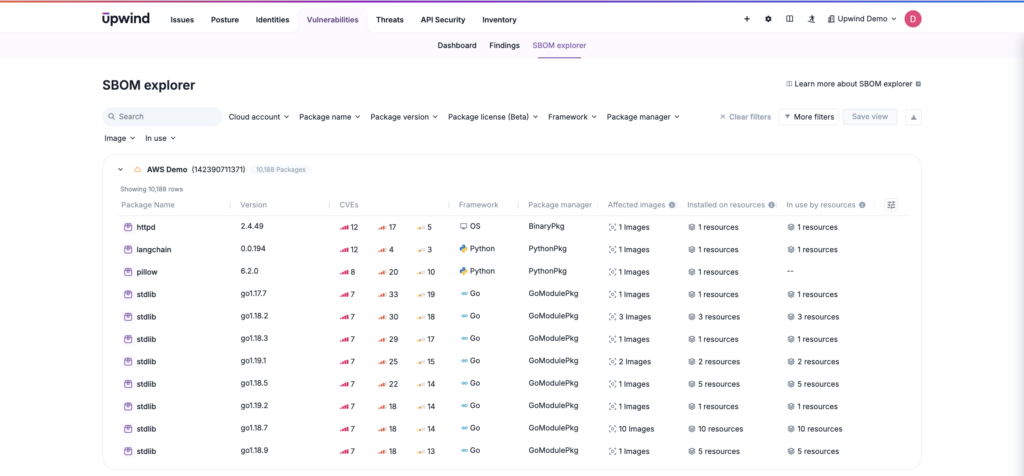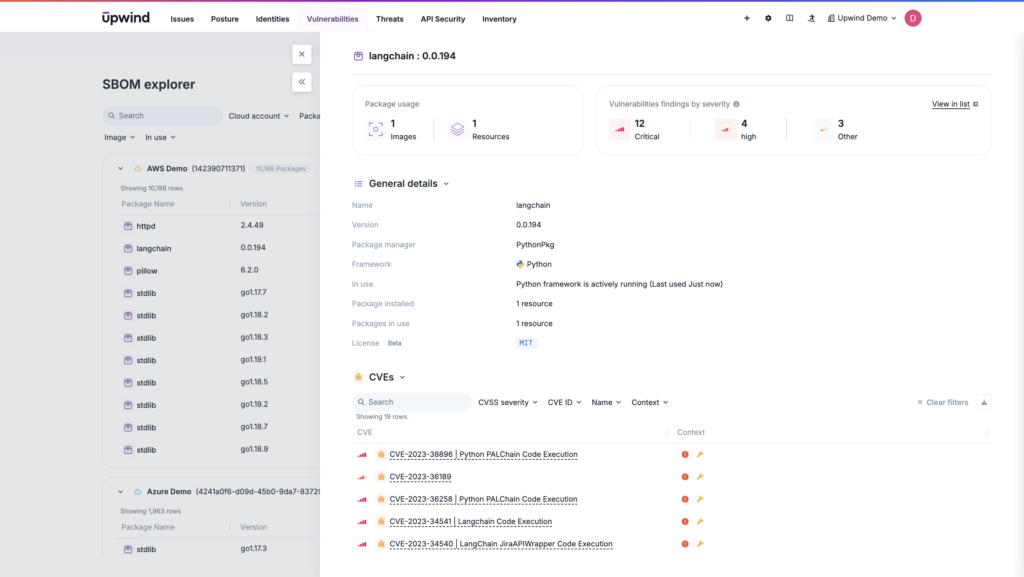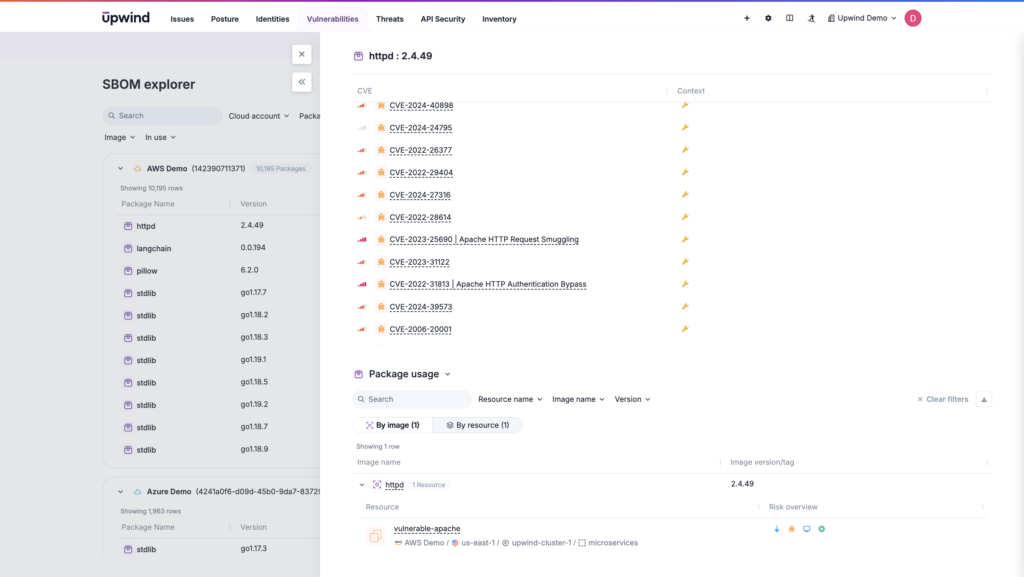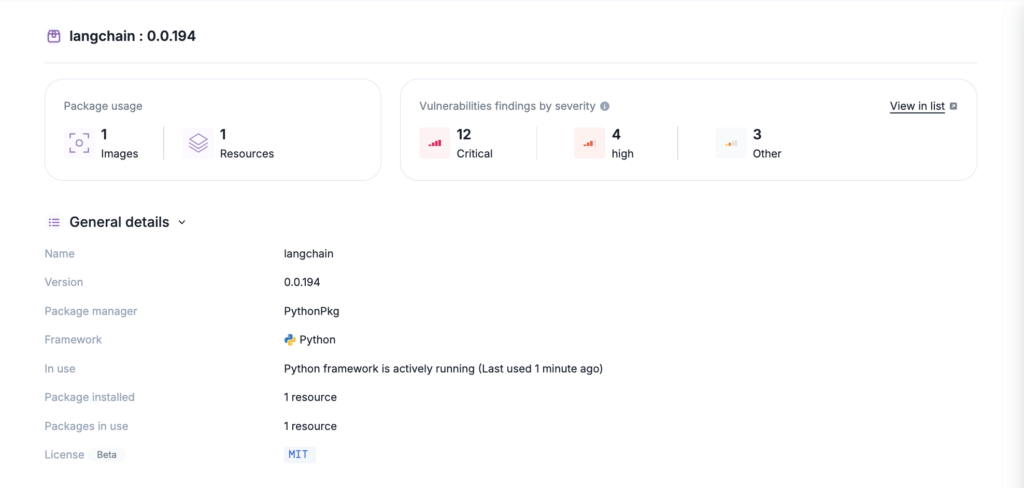
Choosing the right open-source Software Bill of Materials (SBOM) tool requires balancing multiple considerations, from long-term support to compliance, data accuracy, and compatibility. For those in highly regulated industries or with complex dependency trees, balancing these considerations can feel like an even greater challenge. Is there a “top” tool? For whom? We’re reviewing the current landscape of open-source SBOM tools.
What is an Open-Source SBOM Tool?
An open-source SBOM tool is a software solution that generates and manages SBOMs, the detailed lists of the components and their dependencies of an application.
These tools catalog the parts (such as libraries, packages, and modules) that make up an application, providing transparency about what’s inside the code, especially third-party and open-source dependencies. For example, names, versions, and release dates are all contained in an SBOM, making it easier for security teams to quickly assess whether they’re impacted by licensing changes, code updates, or security breaches.
Key functions of open-source SBOM creation tools include:
- Dependency inventory: Open-source tools list components and maintain transparency in an ecosystem of multi-layered applications.
- Vulnerability scanning: Many open-source SBOM tools integrate with vulnerability databases to flag known vulnerabilities in dependencies, called open-source vulnerability management.
- Compliance and licensing information: Tools often check licenses of included components to ensure compliance.
- Data formats for interoperability: Tools commonly output data in standardized SBOM formats like SPDX (Software Package Data Exchange), CycloneDX, or SWID (Software Identification Tagging), aiding compliance, audit-readiness, and interoperability with other security tools.
Upwind’s SBOM Explorer
The SBOM Explorer is designed to provide visibility into the packages and dependencies within your cloud environment at runtime. It allows you to view all packages, including their dependencies, and offers search capabilities by framework, package manager, and usage metrics.
Why Use Open-Source SBOM Tools?
Identifying dependencies is a lynchpin in cloud security, but generating SBOMs may not be. That’s because SBOMs offer a static snapshot of dependencies, while runtime analysis captures dynamic, real-time data about what’s running in the cloud, allowing immediate response to vulnerabilities as they surface.
Runtime analysis is particularly beneficial in cloud environments where continuous deployment cycles and infrastructure changes make it challenging to rely solely on SBOMs generated at specific points in the software development lifecycle (SDLC). Continuous analysis of dependencies and configurations as they operate in real time means actionable security intelligence, including on emerging threats or rapid environment changes where pre-generated SBOMs may not reflect current risk profiles.
While SBOMs aren’t a necessity for all, they are often a compliance must-have, as well as a complementary tool to runtime security that offers a more comprehensive approach, balancing proactive and reactive security measures.
Let’s cover some of the core reasons why teams might want to generate SBOMs:
Compliance
Government contractors must provide SBOMs, either directly or by publishing to a public website, for their applications. Yet SBOMs don’t guarantee complete security or compliance in dynamic cloud environments. As applications run, organizations should be aware that new dependencies can be introduced or updated, and environmental configurations shift, creating new risks that build-time SBOMs may not capture.

Vulnerability Detection
SBOMs are a proactive tool for identifying known vulnerabilities in dependencies, allowing organizations to mitigate risks before deployment. A primary reason for adopting SBOMs is to identify known vulnerabilities in software dependencies before deployment. An SBOM provides a comprehensive list of libraries and components, allowing teams to cross-check each against vulnerability databases. As new vulnerabilities emerge, SBOMs that list dependencies as “safe” can become outdated.

Enhanced Software Supply Chain Security
SBOMs document all third-party and open-source components in an application. This transparency allows security teams to document the origin and integrity of components, as well as track and secure software sources. They can, for example, generate SBOMs to vet all third-party libraries for secure sourcing and potential risks. Ultimately, static SBOMs may not detect unauthorized component changes made after deployment.

Incident Response
SBOMs offer a structured inventory for incident response, allowing security teams to quickly answer whether their components are affected and, if so, which ones. On zero days, teams can use SBOMs to check if any compromised dependencies were in use, helping narrow their investigation scope. SBOMs are limited in that they can only show what was included at deployment, not necessarily all current components.
Risk Assessment
SBOMs provide a baseline for understanding dependency risks at deployment so teams can gauge risks and set appropriate controls. Their goal is to assess and mitigate dependency risks before an application goes live. That initial SBOM development, however, doesn’t account for changes in dependencies that may alter the risk landscape.

Licensing and Intellectual Property
SBOMs document licenses for each component, helping teams avoid legal risks associated with open-source license violations. However, they don’t entirely avoid the possibility that incompatible licenses could be included with an organization’s product. That’s simply because new updates and dependencies aren’t always captured by static SBOMs.
Comprehensive runtime monitoring is a complementary feature to the shift-left imperative for more secure software component accounting during the build phase. It adds to the overall security of software in the cloud as it dynamically assesses dependency security — augmenting what helpful SBOMs set up from the start.
The Top 6 Open-Source SBOM Tools Compared
The demand for software transparency has led to the growth of open-source SBOM tools, each with unique capabilities. These tools allow organizations to identify and manage dependencies. While none can completely secure software dependencies in dynamic cloud environments, they provide a foundational layer of software security in the build phase to minimize risks when it comes tie for deployment.
The top 6 open-source SBOM tools are:
- Syft: Developed by Anchore
- OWASP Dependency-Check: Developed by the OWASP Foundation
- Fossa: Developed by FOSSA Inc.
- CycloneDX CLI: Created by the OWASP Foundation
- Trivy: Created by Aqua Security
- SPDX Tools: Maintained by the Linux Foundation
Each tool offers capabilities tied to different stages of the software lifecycle, with a different core focus, ecosystem coverage, license detection, and SBOM format:
| Tool | Focus | SBOM Formats Supported | Ecosystem Coverage | License Detection |
| Syft | SBOM generation | SPDX, CycloneDX | Multi-language, Containers | Planned |
| OWASP Dependency-Check | Vulnerability Scanning | CycloneDX | Java, .NET, Python, Ruby | Limited |
| FOSSA | Compliance, Licensing | SPDX | Multi-language | Yes |
| CycloneDX CLI | CycloneDX Compatibility | CycloneDX | Multi-language | No |
| Trivy | Vulnerability & SBOM | SPDX, CycloneDX | Containers | No |
| SPDX Tools | SPDX Compliance | SPDX | Multi-language | No (format-only) |
And while these tools share some core capabilities, each excels at different use cases. Which is right for your tasks, from compliance to vulnerability scanning? Consider these trade-offs in use case and limitations:
| Tool | Best Use Case | Limitations |
| Syft | SBOM in CI/CD pipelines for multi-language apps | Limited license detection |
| OWASP Dependency-Check | Vulnerability detection for Java and .NET | Limited license detection |
| FOSSA | Compliance-focused SBOM for license management | Limited vulnerability scanning |
| CycloneDX CLI | CycloneDX format SBOM generation for compatibility | No built-in vulnerability or license detection |
| Trivy | Combined SBOM and vulnerability scanning for containers | Primarily container-focused |
| SPDX Tools | Standardizing on SPDX compliance | Requires integration with other tools for scanning |
Tool compatibility within CI/CD and cloud-native environments is a key differentiator between open-source SBOM tools. Let’s look at compatibility with CI/CD workflows, container support, and cloud-native integration:
| Tool | CI/CD Integration | Container Support | Cloud-Native Compatibility |
| Syft | Yes | Yes | Yes |
| OWASP Dependency-Check | Yes | Limited | No |
| FOSSA | Yes | Yes | Limited |
| CycloneDX CLI | Yes | Yes | Yes |
| Trivy | Yes | Strongest — designed for container environments | Yes |
| SPDX Tools | Limited | Limited | No |
Summary: Which is “The Best”?
Are those open-source tools with the most features the best? Not necessarily.
Not all organizations need or desire an “all-around” solution. For instance, a tool that is particularly strong in license compliance with legal risk assessment (like FOSSA) is a top choice for teams with high compliance demands, even though it may lack features like extensive built-in vulnerability scanning.
Besides, some tools can see their capabilities expanded using integrations with other tools, eradicating seeming gaps in their feature sets. Syft is a good example. While it focuses primarily on SBOM generation, it pairs with other open-source tools like Grype for vulnerability detection.
It’s also important to remember that simple, lightweight solutions may be best for teams that need to cover essential needs without added complexity. CycloneDX CLI, for instance, specializes in generating CycloneDX format SBOMs without adding vulnerability or license detection. For organizations looking for a streamlined SBOM solution, this focus on format compatibility can be ideal.
SBOM Tools: Commercial or Open Source?
As shown in this article, there are numerous open-source SBOM tools available which offer solutions for basic SBOM visibility. However, for teams who want the ability to more tightly integrate SBOM monitoring within their security practice, commercial SBOM tools may be a better choice.
For example, SBOM monitoring may be offered by more comprehensive security tools, such as a CNAPP. By providing the ability to create SBOMs, monitor packages and their dependencies, and integrate those findings with a team’s larger security practice, including threat detection and vulnerability management, teams can streamline their security practice and ensure faster time to remediation – especially in the case of a zero-day.
Upwind Protects Dependencies at Runtime
The Upwind CNAPP creates SBOMs at runtime, tracking dependencies and identifying affected software components quickly. With Upwind, teams can identify affected versions and dependencies, get rich context about the potential impact of their vulnerabilities, and prioritize patching or updating. In the case of a zero-day, Upwind users can rapidly identify any affected packages and their dependencies, as well as view which resources have them in use.
To see Upwind in action, schedule a demo.
FAQ
Is SBOM mandatory? Who creates an SBOM?
SBOMs are mandatory for government contractors in the U.S., and encouraged by multiple other countries, regions, and industry groups.
That’s led many DevOps teams and third-party vendors to create initial SBOMs in the CI/CD pipeline using automated tools like these top open-source SBOM tools. That helps catalog dependencies as they are integrated into the codebase. That said, DevSecOps and security teams are typically responsible for validating the SBOM and monitoring for newly identified vulnerabilities in existing components, and compliance teams may also work with SBOMs to verify compliance.
What is the difference between SCA and SBOM?
Software Composition Analysis (SCA) and SBOM both manage dependencies in software. But SCA is distinct from SBOM, which documents components and dependencies in a static form. SCA is a tool that actively scans software components for vulnerabilities and license risks, often in real time.
When should you generate and implement an SBOM?
DevOps teams should generate SBOMs at various key stages in the software development lifecycle: during development to capture dependencies, at build time to capture a snapshot of the components included in a release, and then periodically in production to maintain an accurate record of what is running and monitor for configuration drift and other issues.
Security teams implement an SBOM as part of a security and compliance strategy when supply chain transparency is required. Implementation includes integrating into the CI/CD pipeline and updating it regularly while making it available to development, security, and compliance teams.
What are the most common SBOM formats?
The most common SBOM formats are Software Package Data Exchange (SPDX), CycloneDX, and Software Identification Tags (SWID). Each comes with its own strengths, limitations, and best use cases that teams should compare before choosing a standard format. Teams may also work with multiple formats based on complex and diverse organizational needs.





